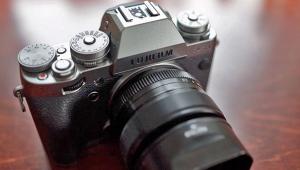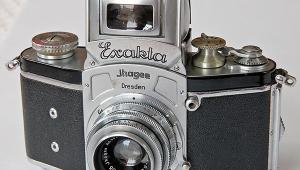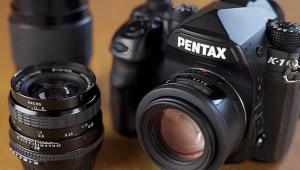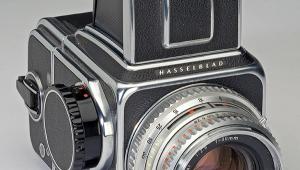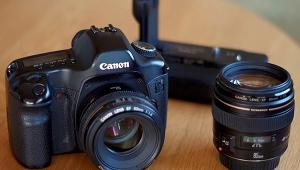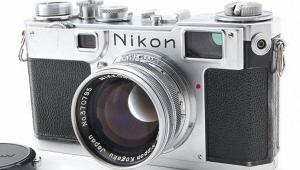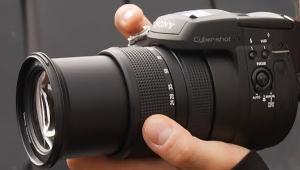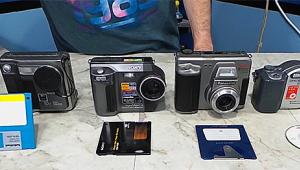The Twin Lens Contaflex: A 35mm TLR
“Apart from its unusual use of 35mm, the Contaflex differed from traditional TLRs in many ways. Most rollfilm TLRs ran the film top to bottom of the body. The Contaflex ran the film side to side.”

© John Wade

© John Wade
The Twin Lens Reflex (TLR) design involved two lenses, one to record its image on film, the other to reflect its image to a focusing screen. The style dates back to the days of plate cameras, but came to the fore with the launch of the Rolleiflex in 1928.
Subsequently, the majority of TLRs followed the Rollei style, with the lenses one above the other, and using roll film to produce 2 1/4 inch square images, both on the viewing screen and the film. The Contaflex, made by Zeiss Ikon in 1935, was one of a very few TLRs made to take 35mm film. The camera is usually known as the Twin Lens Contaflex to differentiate it from a single lens reflex of the same name launched by Zeiss in 1953.
Apart from its unusual use of 35mm, the Contaflex differed from traditional TLRs in many ways. Most rollfilm TLRs ran the film top to bottom of the body. The Contaflex ran the film side to side.
In a traditional rollfilm TLR, the focusing screen was the same size as the film image, large enough for easy viewing. In a camera using 35mm, an equivalent viewing screen would be only 24x36mm, too small to be practical. The Contaflex got around that by using lenses of different focal lengths for shooting and viewing. The shooting lens was 50mm, the standard focal length for a 35mm camera. But the viewing lens was 80mm, which meant the image on the viewing screen, found under the fold-up focusing hood, was around twice the size of the negative image.
That screen was not ground glass, but a rectangular Fresnel lens which gave a brilliant image, focused by rotating a lever to the side of the viewing lens, to turn both it and the taking lens simultaneously. The two lenses were geared so that the viewing lens extended further from the body than the taking lens as it was focused, due to the different focal lengths.
For critical focusing, a magnifier was swung into position from behind the hood. The full size of the screen gave the view for the 50mm lens, but it was etched with guidelines for 8.5cm and 13.5cm lenses. Similar guides also appeared in the eye-level viewfinder.
This took the form of a semi-silvered mirror on the front of the focusing hood, through which the photographer looked by means of an aperture on the back. Guidelines were etched onto the inside back of the hood, from where they were reflected by the back of the semi-silvered mirror. As a result, the guides appeared to hover over the scene being viewed.
From the front of the hood, the semi-silvered mirror reflected the same field of view as the camera lens, making it ideal for self-portraits, when the delayed action device was activated.
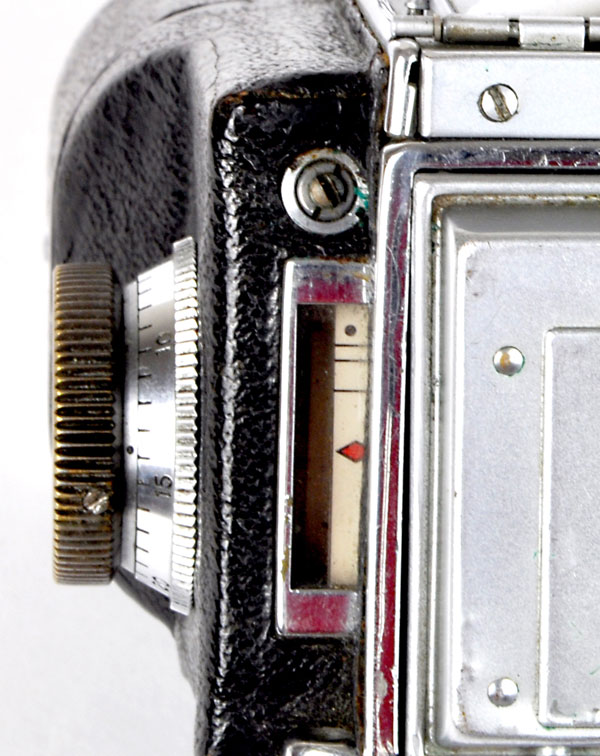
© John Wade

© John Wade
Interchangeable Lenses
Those guides in each viewfinder indicated the next feature only rarely found in a TLR: interchangeable lenses. The Contaflex was sold with a choice of 5cm Tessar f/2.8, Sonnar f/2, or Sonnar f/1.5 standard lenses. Also available were a Biogon 35mm f/2.8 wide angle, plus Triotar 8.5cm f/4, Sonnar 8.5cm f/4, and Sonnar 13.5cm f/4 telephotos. All were bayonet fit.
Apertures were set on the lenses, shutter speeds from 1/2 to 1/1000 sec by a knob on the side of the body, which also tensioned the focal plane shutter—another rarity in TLRs.
Built-in Metering, Too
In 1935, handheld photoelectric exposure meters were rare. To have one built into a camera was unheard of. Yet, under a flap with the Contaflex name on it, there was a selenium cell that powered a match needle metering read-out in a small window to the side of the focusing hood.
Above the viewing lens there were three scales. The first was to set the speed of the film. Above this was a scale showing all the camera’s apertures. Above that was a scale on a moving ring which listed the shutter speeds. The settings on these last two scales appeared upside down when viewed from the front, enabling them to be read by the photographer from above while operating the camera in the usual way.
Turning a lever attached to the top ring moved the shutter speed scale in relation to the aperture scale, and also shifted a needle in the meter window. When this was lined up against a central point, the shutter speeds on the top scale lined up with the suggested apertures for correct exposure on the middle scale. Although the camera’s speeds went only to 1/2 sec, the metering scale went down to 16 seconds. The suggested exposure had to be set manually on the camera.
More Unique Features
So: a TLR which took 35mm film, had lenses of different focal lengths for viewing and shooting, took a range of seven interchangeable lenses, and was the first camera with a built-in exposure meter. What more could it possibly have? How about a plate back?

© www.peterloy.com
The Contaflex plate back fitted to the camera in place of its normal back. A hinged door swung up and a plate holder, containing a small glass plate, was slid onto rails on the back of the door, which was then closed. The plate holder’s dark slide was removed, the exposure made, and the dark slide replaced, before opening the back’s door and going through the process again for the next exposure. A tiny ground-glass screen and magnifier were also available for use with the plate back.
Few cameras can truly be termed unique, in that their specifications are unlike those of any other cameras. But when all the various aspects of the Contaflex are put together, it’s one camera that deserves that title.

© John Wade
35mm TLRs Of Note
* Bolsey C, 1953,
US: A compact camera derived from the Bolsey B with an extra lens and viewing hood added. The C22 model added Set-O-Matic, which set smaller apertures as the lens was focused closer to subjects, automatically adjusting exposure when using a flashgun.

* Toyocaflex 35, 1955,
Japan: Unusual for placing two lenses side by side. Operation of a lever to the side of the taking lens moved both back and forth to focus. A direct vision viewfinder was also incorporated.

© John Marriage
* Samocaflex 35, 1955,
Japan: Similar to the Asahiflex (the precursor of the Pentax) but with a viewfinder lens above the taking lens. To focus, both were moved back and forth as a radial lever to the side of the lower lens was rotated. A traditional optical viewfinder was set beside the reflex finder.

* Agfa Flexilette, 1960,
Germany: Similar to the same company’s Silette, with the addition of an extra lens to reflect its image to a small screen in the waist-level viewfinder on top of the body.

* Tessina, 1961,
Switzerland: The size and shape of a matchbox, made to be worn on the wrist like a watch and taking 35mm film, pre-loaded into special slim-line cassettes. The twin lenses were mounted on the narrow edge of the body at right angles to the film path. Two mirrors were used to reflect their images down to the film and up to the ground-glass screen on top of the body. It also incorporated a clockwork motor drive.

Prices
* Twin Lens Contaflex in mint condition and working meter: $1500-$2000
* Bolsey C or C22: $80-$120
* Toyocaflex 35: $300-$450
* Samocaflex 35: $400-$600
* Agfa Flexilette: $120-$160
* Tessina: $400-$600
- Log in or register to post comments
